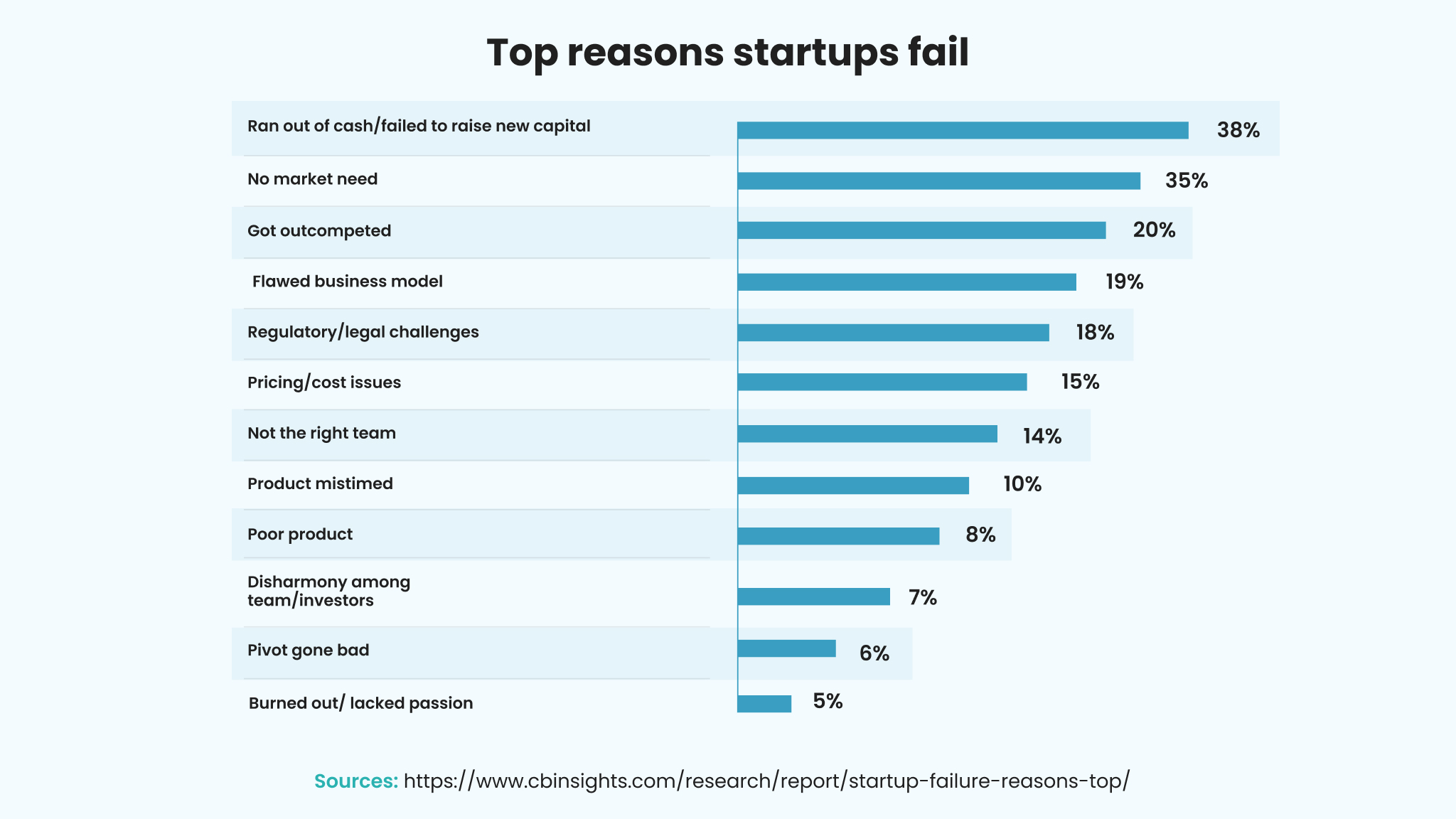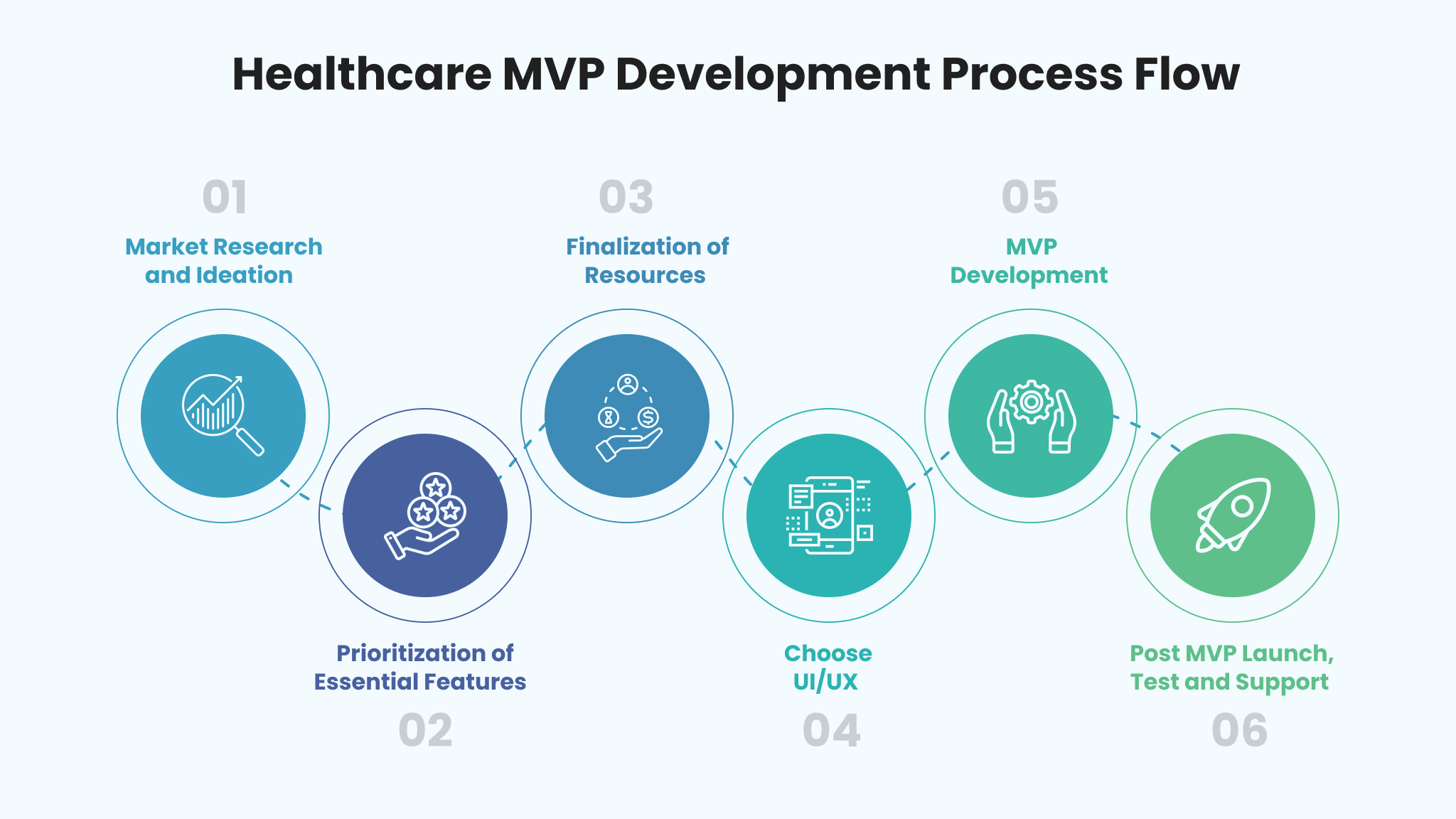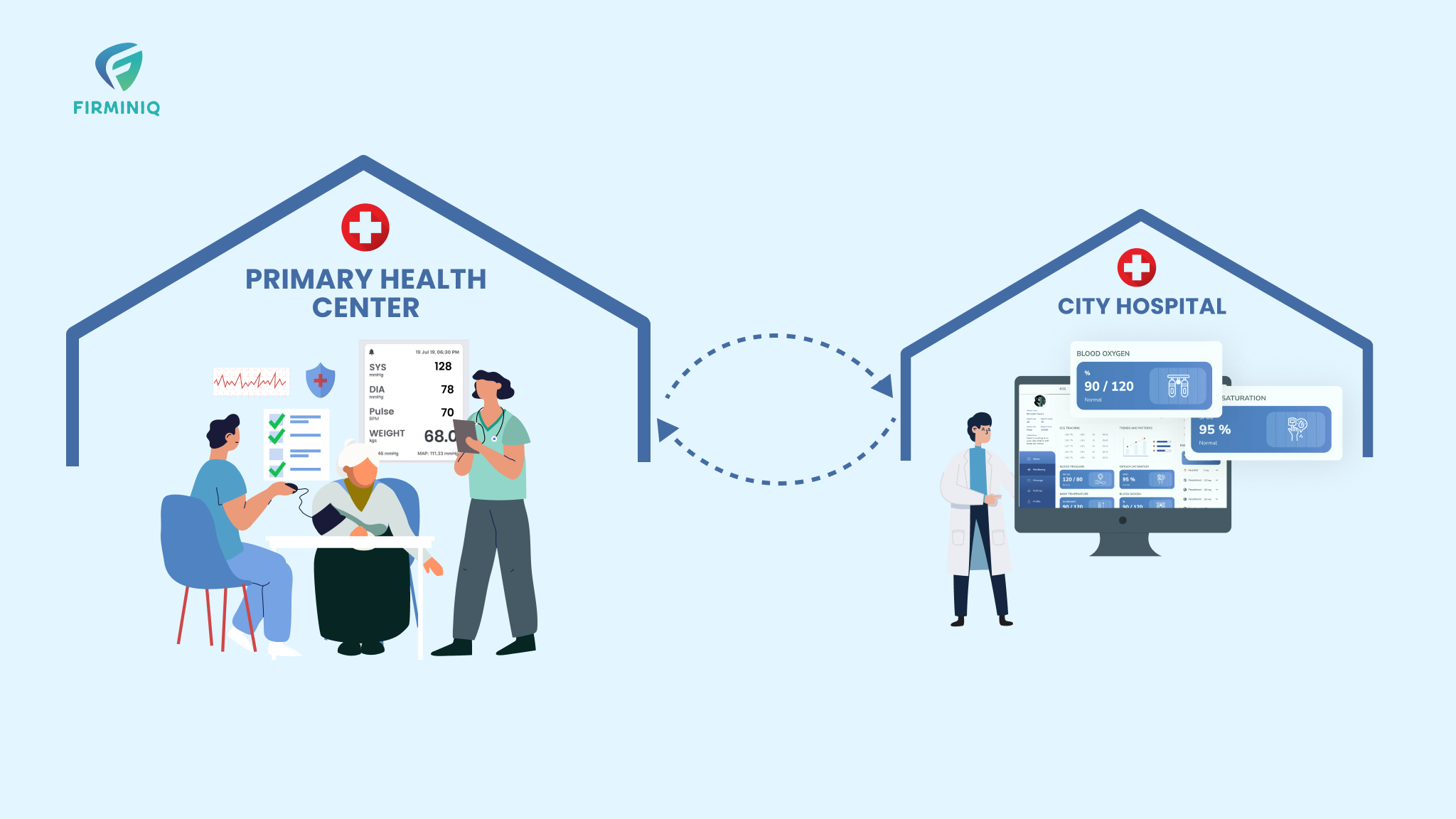The digital healthcare ecosystem promises a bright future in the upcoming years with advancements in connected healthcare, interoperability, remote patient monitoring (RPM) and more. In recent years, RPM has become a vital component as it evolves rapidly while allowing healthcare organizations to treat patients suffering from a myriad of conditions.
From offering insights into medical reports to real-time patient monitoring and automating mundane tasks, RPM continues to help achieve exceptional efficiencies. Before moving forward, let us highlight some facts about the RPM market.
“The global RPM market was estimated to be worth $53.6 billion in 2022 and is expected to reach $175.2 billion by 2027, at a CAGR of 26.7% from 2022 to 2027.”- MarketsAndMarkets.
Therefore, the trend for RPM mobile applications in healthcare continues to gain momentum.
But why build an entire application, when you have the option for MVP for Remote Patient Monitoring and cutting the risks?
Building a healthcare MVP varies from other industries and directly affects the patient’s well-being and the physician’s as well. Therefore, several attributes are to be planned. Well, here is an article that will save your crucial time in studying varied materials and researching MVP, because we have covered it all.
Defining an MVP for RPM Solution
The MVP for remote patient monitoring software does not need a comprehensive solution. This is because what if spending months and weeks on development, and still the customer’s needs are not satisfied, and it does not work out?
Building an MVP instead turns out to be a more practical and lucrative choice for, where the development takes place in sprints. It allows you to add up only the essential features which you need to test your hypothesis.
Targeting the Right Attributes for Building a Healthcare MVP
1. Analyze the Competition
The healthcare industry is highly competitive, so it is vital to take time and understand the direct and secondary competitors that help organizations make informed decisions. Digging deeper helps to analyze the competition and figure out the crucial features to integrate based on different stakeholders (Patient, Doctor, Service Provider, and more). Whether a startup or an enterprise it is vital to offer something unique and stand out in the competition.
2. Research Customers Base
Customer base are the people who would be using the product and it is one of the crucial aspects that help developers balance MVP development process. It helps to determine the viability of a new service or product. Once the organization finds the right customer base, they must focus on the geographical segmentation as well. It proves to be a real change when the organization plans to build an MVP.
Healthcare MVP Development Process Flow
1. Market Research and Ideation
Market research and ideation are the primary steps that help understand the target audience, understand the problem, the existing players in the market, the customer’s pain points, and how the product will address them. Identifying the value proposition and USPs also comes under ideation. Monitoring the healthcare market with the competitors for insights will help create a functional roadmap for MVP product development.
As we are talking about the healthcare sector, compliance with HIPAA (Health Insurance Portability and Accountability) and other regulations is unavoidable and must be taken care of before building an MVP product for healthcare.
2. Prioritization of Essential Features
For the healthcare domain, introducing crucial features for different stakeholders is essential. You will directly cater to the patient or healthcare professionals. The final product has large functionality, and finding the minimum possible features that go with the MVP is challenging.
Therefore, categorizing them based on high, medium, and low priority can help segregate and choose features. Understanding productivity, product value and scope allows organizations to finalize the essential features at the best cost.
3. Finalization of Resources
Once the features are finalized resources are allocated. Do you have an in-house team or need to outsource is the organization’s decision. It is important that you decide on the budget of your MVP healthcare accurately as it will determine your long-term returns.
4. Choose UI/UX
Users want to leverage personalized experiences and want to take the next steps quickly. If they do not find such things, they just leave. Therefore, MVP design is yet another crucial stage that will determine whether the product developed is user-friendly, liked by audiences, and easy to navigate. It stands for a clean, clear, and understandable structure of the MVP.
For the UI/UX design considerations here is a blog that covers all the top considerations that will help you achieve a competitive edge.
5. MVP Development
A lean development approach helps ensure building a right version of the MVP. Well, at this stage it is vital for the organizations to focus on the wireframes, technologies user feedback and changes based on acquired insights and feedbacks.
6. Post MVP Launch, Test and Support
After the MVP product development comes the testing for quality assurance. Quality assurance engineers work on improving the product’s quality. All the steps involved in the process must practice BML (Build, Measure, Learn) that helps the remote patient monitoring to stand amongst the competitors.
To Wrap Up!
Healthcare and remote patient monitoring is one of the most competitive segments and the organization must focus on the alliance even post launch. MVP software development paves a way for the marketers to test their ideas and eliminate the risks of investment in a product that the audiences might not be interested in.
However, to build an appreciable Remote Patient Monitoring MVP, organizations must choose the right service provider.
FIRMINIQ is one of the leading organizations that specialize in healthcare app development no matter if an MVP or a fully featured product. From mobile apps to web apps, software for wearables, and RPM apps, we can assure you of a compliant MVP!
Building an MVP for a remote patient monitoring application requires robust strategies beforehand. Contact us and know how we have been helping different organizations!








